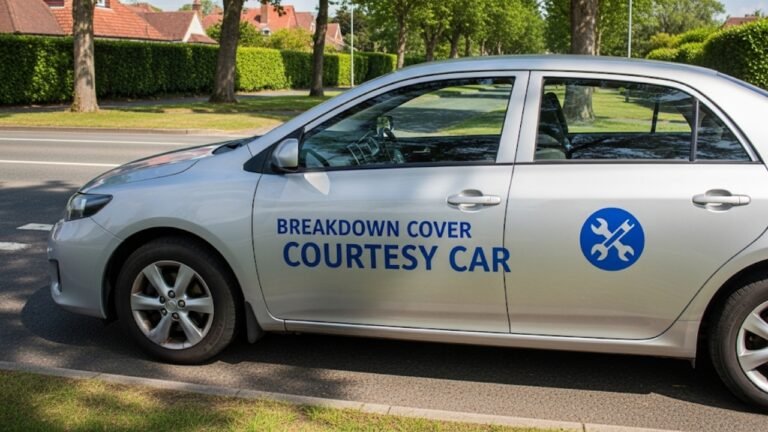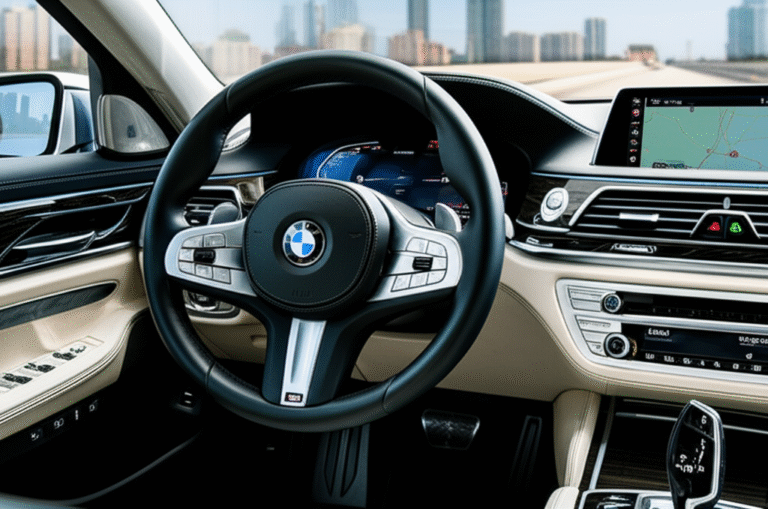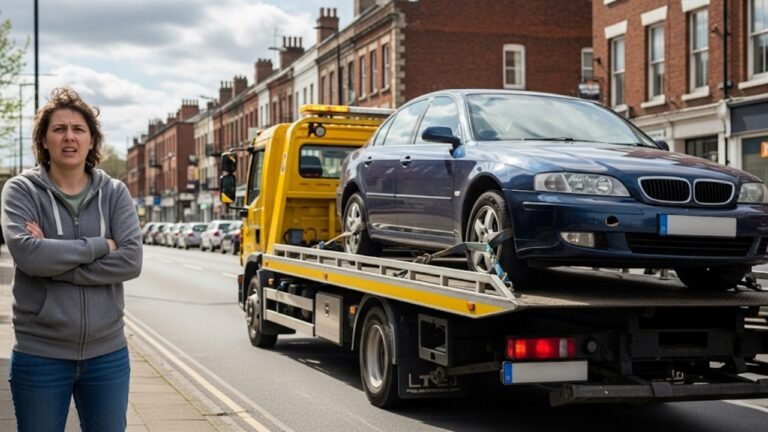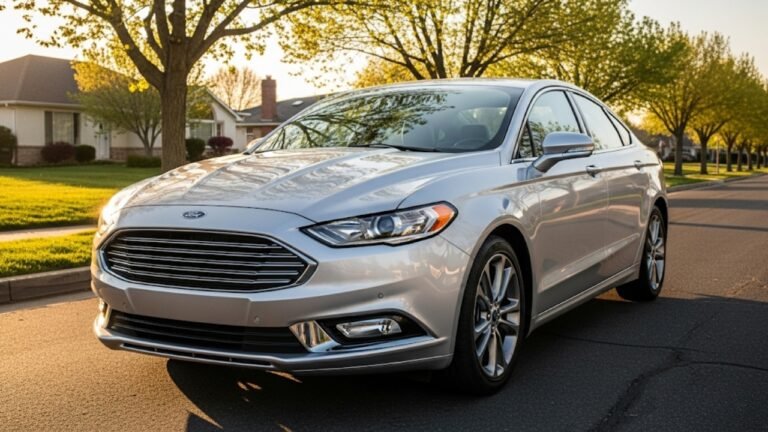BMW S1000RR Mileage Per Liter: 6 Brilliant Insights
BMW S1000RR Mileage Per Liter: 6 Brilliant Insights
Understanding your BMW S1000RR’s mileage per liter is crucial for performance and economy. This guide breaks down 6 key insights, helping you maximize fuel efficiency and enjoy every ride across the USA’s diverse landscapes.
Key Takeaways
- Maximize BMW S1000RR mileage per liter through smart riding.
- Regular maintenance significantly boosts S1000RR fuel economy.
- Tire pressure impacts your S1000RR’s fuel efficiency directly.
- Weight reduction improves S1000RR mileage per liter.
- Understand riding modes for optimal fuel consumption.
- Acknowledge environmental factors affecting S1000RR MPG.
Navigating the world of high-performance motorcycles can be exciting, especially when you own a machine as capable as the BMW S1000RR. Many riders, from seasoned enthusiasts to those new to the superbike scene in the USA, wonder about its fuel consumption. Understanding your BMW S1000RR mileage per liter isn’t just about saving money at the pump; it’s about optimizing performance and gaining deeper insight into your machine. This comprehensive guide will explore six brilliant insights to help you understand and improve your S1000RR’s miles per liter.
We’ll cover everything from riding techniques to essential maintenance, ensuring you get the most out of your powerful German sportbike. Ready to unlock the secrets to better fuel efficiency and a more exhilarating ride? Let’s dive in and discover how to enhance your BMW S1000RR mileage per liter.
1. The Art of Smooth Riding: How Your Throttle Control Impacts Fuel Use
The BMW S1000RR is engineered for exhilarating performance, but aggressive throttle inputs can significantly drain its fuel tank. Achieving better mileage per liter starts with mastering smooth acceleration and deceleration. Think of it as a dance between you and the motorcycle; every jerky movement wastes energy, and in this case, fuel.
Smooth Acceleration Techniques
- Gentle Throttle Roll-On: Instead of snapping the throttle open, gradually increase your speed. This allows the engine management system to deliver fuel more efficiently. Imagine pouring liquid gold; you wouldn’t just dump it out!
- Anticipate Stops: Look ahead and anticipate traffic lights, stop signs, and slower vehicles. By easing off the throttle early and using engine braking, you can avoid sudden braking and unnecessary fuel consumption.
- Consistent Speed: On highways, maintaining a steady speed is key. Avoid constant speed fluctuations. Cruise control, if equipped or retrofitted, can be a fantastic tool for this.
The Benefit of Engine Braking
Engine braking, the deceleration effect that occurs when you close the throttle and downshift, not only helps slow the bike but also cuts off fuel injection to the cylinders. This means you’re not using any fuel during the deceleration phase. This is a vital technique for improving your BMW S1000RR mileage per liter on winding roads and during spirited riding in the USA’s scenic byways.
For those new to this, practice on less crowded roads. Feel how the bike slows itself down as you downshift. It’s an elegant way to conserve fuel and enhance control, especially when navigating the diverse terrains of America. Understanding this relationship between throttle input and fuel delivery is fundamental to maximizing your S1000RR’s efficiency.
2. Essential Maintenance for Optimal Mileage Per Liter
A well-maintained BMW S1000RR is a more efficient motorcycle. Just like a finely tuned athlete, your bike performs best when all its components are in peak condition. Neglecting regular maintenance is one of the quickest ways to see your mileage per liter suffer.
Key Maintenance Areas Affecting Fuel Economy:
Here are critical areas to focus on:
- Air Filter: A clogged air filter starves the engine of oxygen, forcing it to work harder and consume more fuel. Regularly inspect and clean or replace your air filter. A clean filter ensures optimal air-fuel mixture.
- Spark Plugs: Worn or fouled spark plugs lead to incomplete combustion, reducing power and increasing fuel consumption. Ensure your spark plugs are in good condition and replaced according to BMW’s recommended intervals.
- Oil Changes: Fresh, high-quality engine oil reduces friction between moving parts. Less friction means the engine runs more smoothly and efficiently, directly contributing to better mileage per liter. Use the recommended oil viscosity for your S1000RR.
- Chain and Sprocket Wear: A dirty, dry, or worn chain and sprockets create unnecessary drag. Keep your chain clean, lubricated, and properly tensioned. Check for wear on the sprockets – hooked or worn teeth indicate it’s time for replacement.
The Role of Fuel System Cleanliness
Over time, fuel injectors can become clogged with deposits, leading to poor spray patterns and inefficient fuel atomization. Using a quality fuel system cleaner periodically can help keep injectors clean. For more stubborn blockages, professional cleaning might be necessary. A clean fuel system ensures precise fuel delivery, crucial for achieving the best BMW S1000RR mileage per liter.
Regular servicing, whether done by you or a certified BMW technician, is an investment in your motorcycle’s longevity and performance. Adhering to the service schedule outlined in your owner’s manual is paramount. You can find detailed maintenance schedules in official BMW Motorrad documentation, often available online from reputable sources.
3. Tire Pressure: The Unsung Hero of Fuel Efficiency
It might seem like a small detail, but tire pressure has a profound impact on your BMW S1000RR’s mileage per liter. Underinflated tires increase rolling resistance. This means your engine has to work harder to keep the bike moving, burning more fuel in the process. Think of riding on flat tires – it’s incredibly taxing!
Understanding Rolling Resistance
When tires are underinflated, their sidewalls flex more, and the contact patch with the road becomes larger and less efficient. This increased friction, or rolling resistance, is a silent fuel killer. Conversely, overinflated tires can lead to a harsher ride, reduced grip, and uneven tire wear, but they generally offer better fuel economy than underinflated ones.
Recommended Tire Pressures
BMW provides specific tire pressure recommendations for the S1000RR, which vary depending on rider and passenger load, as well as riding conditions. You’ll typically find these recommendations on a sticker located on the:
- Swingarm
- Inside the chain guard
- In your owner’s manual
It’s essential to check your tire pressure regularly, ideally when the tires are cold. Using a reliable tire pressure gauge is a simple step that pays dividends in both safety and fuel efficiency. For example, a common recommendation for the BMW S1000RR might be around 2.5 bar (36 psi) in the front and 2.9 bar (42 psi) in the rear when cold, but always refer to your motorcycle’s specific guidelines.
Pro Tip: Invest in a high-quality digital tire pressure gauge. They are more accurate than many mechanical gauges and easy to read, ensuring you set pressures precisely. Remember that tire pressure can fluctuate with temperature, especially when riding across different elevations common in the USA.
4. The Impact of Weight: Rider and Luggage Considerations
Every kilogram counts when it comes to a motorcycle’s performance and fuel consumption. The BMW S1000RR, while lightweight for its class, is still affected by added weight. This includes your riding gear, any passenger, and luggage.
Rider Weight and Gear
While you can’t change your personal weight significantly for every ride, be mindful of it. A lighter rider generally requires less energy from the engine to accelerate and maintain speed. Similarly, the weight of your riding gear, especially bulky jackets and pants, contributes to the overall mass the S1000RR needs to move. Opting for lighter, yet protective, gear can offer marginal benefits.
Carrying a Passenger
Carrying a passenger (a “two-up” ride) significantly increases the total weight. This will naturally reduce your BMW S1000RR mileage per liter. The engine has to work harder to overcome inertia and friction. If you frequently ride two-up, expect a noticeable drop in fuel economy compared to solo riding.
Luggage and Accessories
Any extra weight from luggage, whether it’s a tail bag, tank bag, or aftermarket accessories, directly impacts fuel efficiency. The more aerodynamic your bike remains, the better. Avoid overloading your S1000RR. If you need to carry significant items, consider how they are mounted to minimize aerodynamic drag and weight distribution issues.
Example Scenario: Let’s say your S1000RR achieves roughly 45 MPG with a solo rider and minimal gear. Adding a passenger and some luggage could potentially reduce that to 35-40 MPG, depending on the weight and riding style. This highlights the importance of considering weight when optimizing for BMW S1000RR mileage per liter.
5. Riding Modes and Electronic Aids: Tuning for Efficiency
The BMW S1000RR is packed with advanced electronics designed to enhance performance, safety, and rider experience. Understanding and utilizing these features, particularly the different riding modes, can significantly influence your mileage per liter.
Understanding Riding Modes
Your S1000RR likely features several riding modes, such as:
- Sport: Optimizes engine response and power delivery for maximum performance. This mode typically yields lower fuel economy.
- Race Pro: Further refines performance settings for track use, often resulting in the lowest fuel efficiency.
- Rain: Modulates power delivery for reduced grip conditions, making it smoother and more manageable. This mode is generally more fuel-efficient than Sport or Race.
- Road: A balanced setting designed for everyday riding, offering a good compromise between performance and efficiency.
For those prioritizing fuel economy, selecting the “Road” or even the “Rain” mode when conditions permit can lead to a noticeable improvement in your BMW S1000RR mileage per liter. These modes often soften throttle response and limit peak power, encouraging smoother acceleration and reducing unnecessary fuel consumption.
How Electronics Help
Features like BMW’s Dynamic Traction Control (DTC) and ABS Pro, while primarily safety aids, can indirectly contribute to efficiency by preventing wheel spin and uncontrolled deceleration. Smoother, more controlled inputs reduce wasted energy. While these systems are always working to keep you safe, their presence in efficient modes further enhances fuel-saving potential.
Consult your owner’s manual for specific details on your S1000RR model’s riding modes and electronic aids. Experimenting with different modes on various types of roads across the USA can help you find the perfect balance for your riding style and efficiency goals.
6. Environmental Factors: How Weather and Terrain Affect MPG
Even with perfect technique and maintenance, external factors play a role in your BMW S1000RR’s mileage per liter. Understanding these can help you anticipate variations in fuel consumption.
Weather Conditions
- Wind: Riding into a strong headwind requires significantly more power to maintain speed, thus increasing fuel consumption. Conversely, a tailwind can improve your mileage per liter.
- Temperature: Cold air is denser, meaning the engine might require slightly more fuel for optimal combustion. Extreme heat can also affect engine performance and efficiency.
- Rain and Humidity: Wet roads can increase rolling resistance and may necessitate a gentler throttle, potentially improving MPG. However, if you’re constantly fighting for grip, your riding style might become less efficient.
Terrain and Road Type
The landscape you ride through in the USA has a direct impact on fuel economy:
- Hills and Mountains: Ascending steep gradients demands more power, significantly dropping your mileage per liter. Descending can offer some fuel savings if you utilize engine braking properly.
- City vs. Highway: Stop-and-go city traffic with frequent acceleration and braking is far less fuel-efficient than steady-speed highway cruising. The optimized “Road” or “Rain” modes are your best bet in urban environments.
- Road Surface: Smooth asphalt is ideal. Riding on rough, unpaved, or sandy surfaces increases rolling resistance and fuel consumption.
While you can’t control the weather or the terrain, being aware of their impact allows you to adjust your riding style or expectations for mileage per liter. For instance, planning longer trips through flatter, less congested areas might yield better overall fuel economy. For detailed insights into environmental impacts on vehicles, resources like those from the Environmental Protection Agency (EPA) offer general guidance on fuel efficiency factors.
| Factor | Description | Impact on MPG | Optimization Strategy |
|---|---|---|---|
| Riding Style | Smooth vs. Aggressive throttle inputs | High | Gentle acceleration, anticipate stops, utilize engine braking |
| Maintenance | Air filter, spark plugs, oil, chain | Moderate to High | Regular servicing, clean air filter, good spark plugs, fresh oil, lubed chain |
| Tire Pressure | Underinflated vs. Properly inflated | Moderate | Check cold tire pressure regularly (refer to manual) |
| Weight | Rider, passenger, luggage | Moderate | Minimize unnecessary weight, ride solo when possible |
| Riding Modes | Sport, Race Pro, Road, Rain | Moderate | Use “Road” or “Rain” mode for better fuel economy |
| Environmental | Wind, temperature, terrain, road surface | Variable | Be aware, adjust riding style, plan routes |
Frequently Asked Questions (FAQs)
Q1: What is considered good mileage per liter for a BMW S1000RR?
A typical BMW S1000RR, depending on the year and specific model, can achieve anywhere from 35 to 50 miles per gallon (MPG) in mixed riding conditions. This translates to roughly 6.7 to 4.7 liters per 100 kilometers. However, aggressive riding, track use, or poor maintenance can significantly lower this figure.
Q2: Does the riding mode on my S1000RR really affect fuel economy that much?
Yes, the riding modes can have a noticeable impact. “Sport” and “Race Pro” modes prioritize performance with sharper throttle response, while “Road” and “Rain” modes mellow out the power delivery and throttle response, which generally leads to better fuel efficiency. Shifting to a less aggressive mode for cruising can improve your BMW S1000RR mileage per liter.
Q3: How often should I check my tire pressure?
It’s recommended to check your tire pressure at least once a week, and always before a long ride. It’s best to check when the tires are cold, as riding heats them up, which artificially increases the pressure reading.
Q4: Can modifying my S1000RR affect its mileage?
Yes, certain modifications can impact fuel economy. For example, a full exhaust system coupled with an aftermarket ECU tune designed for peak power might decrease fuel efficiency if not carefully optimized. Conversely, aerodynamic modifications that reduce drag could potentially improve it. Engine tuning for efficiency is also possible.
Q5: Is it normal for my S1000RR’s MPG to drop significantly on the track?
Absolutely. Track riding involves sustained high RPMs, aggressive acceleration and braking, and frequent full-throttle usage. These conditions are designed for performance, not fuel efficiency. Expect your mileage per liter to drop considerably during track days compared to normal road riding.
Q6: What are the typical liters per 100 km for a BMW S1000RR?
On average, a BMW S1000RR might consume between 4.7 to 6.7 liters per 100 kilometers (which is equivalent to 35-50 MPG). This range can vary significantly based on driving style, road conditions, maintenance, and the specific riding mode selected. For the most precise figures for your model, refer to BMW Motorrad’s official specifications or owner’s manual.
Conclusion
Understanding and optimizing your BMW S1000RR mileage per liter is a rewarding endeavor. By focusing on smooth riding techniques, diligent maintenance, correct tire pressure, managing weight, leveraging electronic riding modes, and being mindful of environmental factors, you can enhance both your motorcycle’s efficiency and your riding experience. Whether you’re cruising the Pacific Coast Highway or navigating the bustling streets of New York City, these insights will help you get more miles out of every liter of fuel, ensuring your adventures on the S1000RR are as economical as they are exhilarating.




